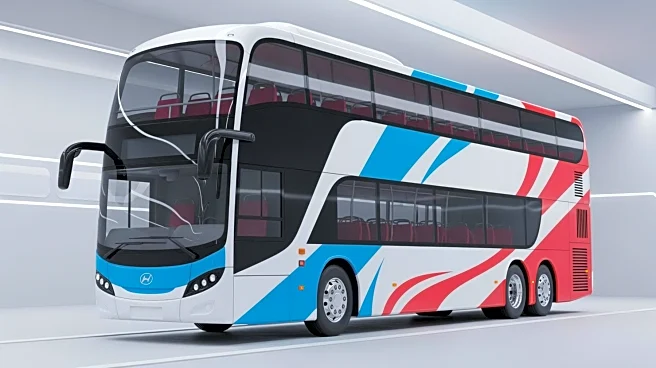What's Happening?
The Fraunhofer Institute for Wood Research in Germany has developed a smart fabric technology designed to improve road management. This innovation involves embedding flax fibers with a thin, electrically
conductive sensor wire into the pavement. The fabric is laid across the base layer of a road during construction, with the surface layer poured over it. A roadside sensor connected to the fabric monitors pressure on the wire over time. AI-powered algorithms then assess the extent of damage and predict when repairs might be necessary. This method allows for continuous monitoring of pavement health without disrupting traffic or causing damage to the road surface. The technology is currently being tested on an industrial road in Germany, with hopes for broader application in the future.
Why It's Important?
This development is significant as it offers a non-invasive method to monitor road conditions, potentially revolutionizing road maintenance. By providing real-time data on pavement health, it can lead to more timely and efficient repairs, reducing the need for disruptive and costly roadworks. This could benefit transportation infrastructure by extending the lifespan of roads and improving safety for drivers. The technology also represents a step forward in integrating smart materials into everyday infrastructure, showcasing the potential for innovation in public works.
What's Next?
The Fraunhofer Institute plans to continue testing the smart fabric technology on various road types to validate its effectiveness and reliability. If successful, this technology could be adopted by transportation departments worldwide, leading to smarter, more efficient road management systems. Stakeholders in the construction and transportation industries may show interest in this technology as a means to reduce maintenance costs and improve road safety.
Beyond the Headlines
The use of smart fabrics in infrastructure highlights a growing trend towards integrating technology into traditional industries. This could lead to broader applications of smart materials in other areas of public infrastructure, such as bridges and buildings, enhancing their durability and safety. Additionally, the environmental impact of reduced roadworks and extended road lifespans could contribute to sustainability efforts.













